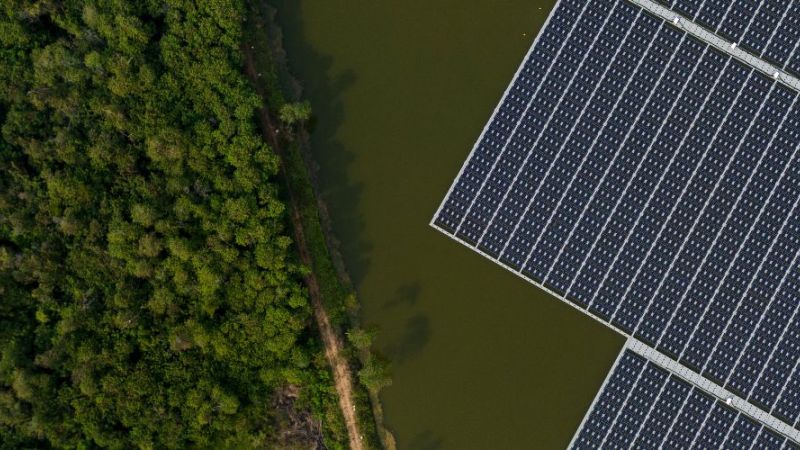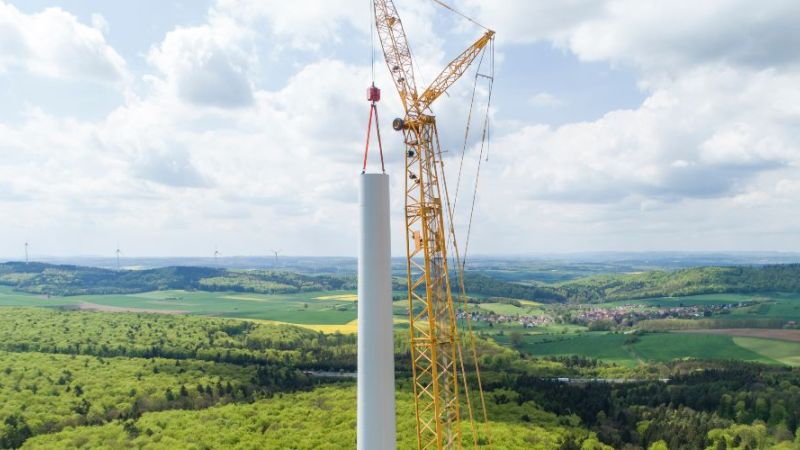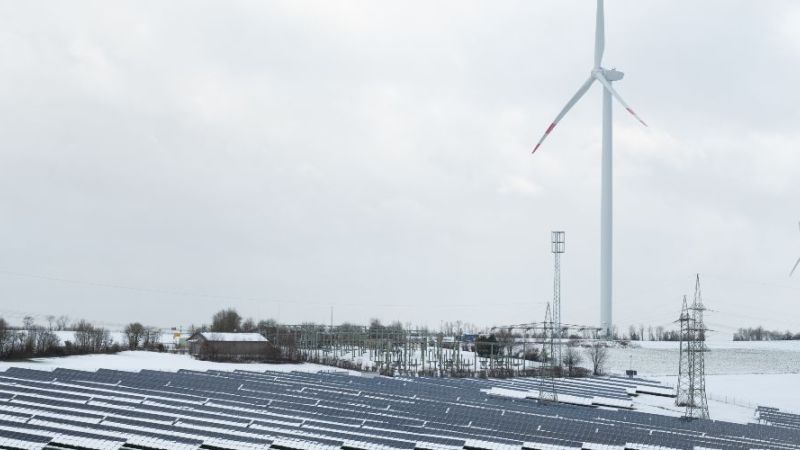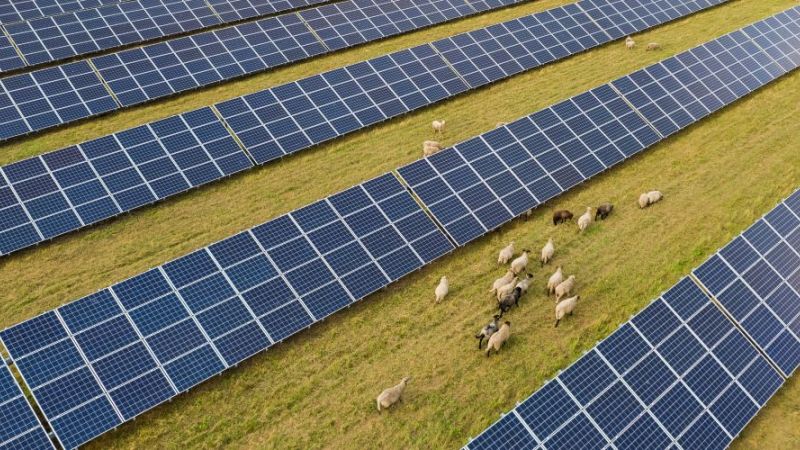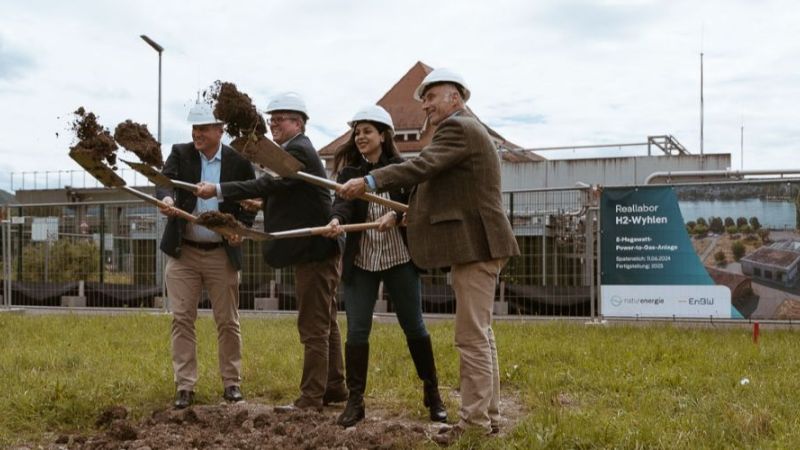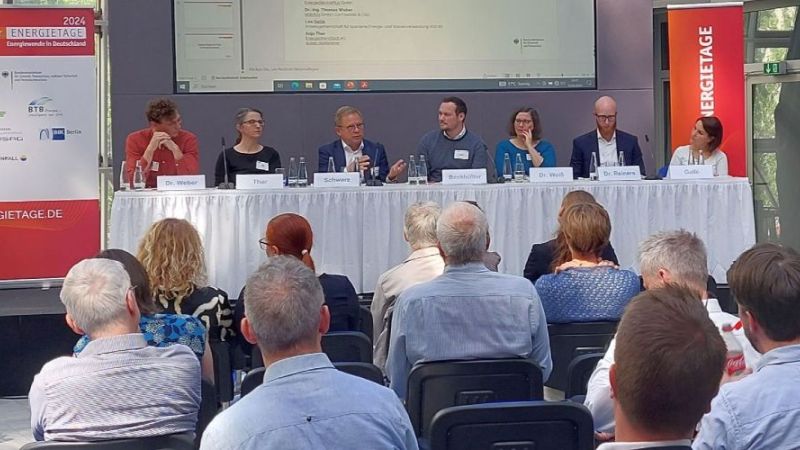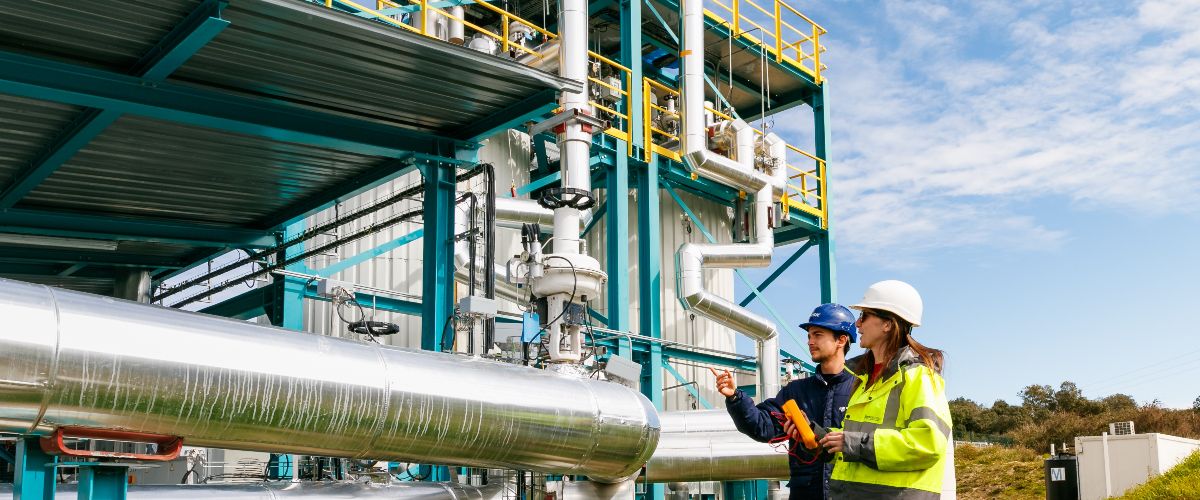 © Universidade de Évora, Hugo Faria
© Universidade de Évora, Hugo Faria
Solar thermal power plants
Parabolic trough test plant with liquid salt operation
Jana Stengler Mission Electricity Transition 2045
INTERVIEW WITH DR JANA STENGLER
In parabolic trough plants, liquid salt can be used instead of thermal oils not only as a storage medium but also as a heat transfer medium. The advantages of this are higher operating temperatures of up to around 560 degrees Celsius with correspondingly higher power plant efficiencies and lower costs. However, commercially operated plants currently still work with thermal oils. In an interview, Dr Jana Stengler from the Institute of Solar Research at the German Aerospace Center (DLR) explains what challenges still need to be overcome in order to use salt economically – and how the recently inaugurated research facility in Évora can contribute to this.
Ms Stengler, DLR, together with various partners, has built a parabolic trough test plant in Portugal that is operated with liquid salt. What is so special about it?
The plant allows us to simulate the operation of a solar thermal power plant that uses salt both as a storage medium and as a heat transfer medium. All relevant components are in use here on site: the solar field operated with liquid salt, a two-tank storage system and a new type of steam generator. With the installed technology, we will be able to generate urgently needed operating data and determine optimisation potential, for example in the design of the necessary solar field heating.
Why is such heating needed?
The heat transfer fluid salt can withstand high temperatures of up to about 600 degrees, which is its advantage over thermal oil. However, the typical solar salt mixture of sodium nitrate and potassium nitrate is only liquid at temperatures above 250 degrees Celsius. Therefore, all components that come into contact with the salt must be heated to at least 250 degrees Celsius. Otherwise what happens is what you will recognise from the garden in winter, when you have forgotten to turn off the garden hose or the tap. At temperatures below zero, the pipes freeze. When thawing, there is a change in density and pipes can burst. This is why it must be possible to heat the entire solar field.
What are the special features?
The challenge with heating is that the absorber pipes of a parabolic trough plant with salt operation must be thermally insulated on the one hand to maintain the 250 degree Celsius operating temperature and prevent losses, but on the other hand the pipes should absorb the solar radiation and let it through to the heat transfer fluid. This is why the metallic absorber pipe is coated with a black surface so that it can absorb as much irradiation as possible. A glass envelope tube runs around this pipe, inside which is a vacuum that allows light to pass through but reduces thermal losses, just like in a thermos flask. So no trace heating can be wound around the pipe on the outside, because the light would not get through. Instead, we work with so-called impedance heating. Here, the metallic absorber pipe itself is used as a heating element by applying electric current to it.
Does the heating have to run 24 hours a day, seven days a week?
This is one of the central questions that is very interesting in terms of costs: During the day in normal operation, the salt is heated through solar irradiation. But how great are the thermal losses overnight? We would like to generate operational data on this. In addition, there is also research work on solar preheating.
How does solar preheating work?
In this case, you would remove the liquid salt from the system in the evening and pre-heat it using solar irradiation the next morning before starting operation. The advantage: The salt would be placed in a drainage tank overnight. That would be a kind of heated parking garage for the salt. With the permanent circulation through the system, depending on the external temperature, the entire line may have to be heated permanently in order to remain unobstructed. In the HPS2 plant, we are currently circulating liquid salt in the solar field. But maybe it makes sense to drain, for example, if bad weather is forecast for a week? And what happens in the event of a malfunction? These are the kinds of issues we want to look at with the research facility.
Are there other components that had to be adapted for operation with liquid salt?
Yes, for example, the parabolic trough collectors have been optimised for operation with liquid salt. The collector mirrors, for example, have a larger aperture and achieve larger concentration factors and thus higher temperatures in the absorber pipe. The steam generator is another component that must be adapted for operation with liquid salt. Here, the higher temperature on the salt side causes higher pressures on the steam side, which means that other materials and designs are used.
What research questions are you continuing to pursue?
In the HPS2 project, we focused on the structure and interaction of the test plant - with the solar field, the steam generator and the storage system as the central components. Looking ahead, I believe it is important to increase the degree of automation of such plants through research. Questions about solar field drainage or the detection and management of emergency situations are also on the agenda. Another issue where nitrate salts and many metallic materials come together at high temperatures is corrosion, or corrosion protection.
Can CSP technology with liquid salt be used in parabolic trough plants in Germany?
Unfortunately, this is not economically interesting for conventional electricity production. We have too little solar irradiation in our latitudes for that. But Germany is known worldwide for its plant engineering. It is therefore primarily a matter of building up expertise here that can be exported in the form of component or entire power plant designs. An alternative application in Central Europe is to use parabolic trough plants to produce process heat instead of power. The efficiency is better compared to photovoltaics, for example, so this can be of economic interest. Other liquid salts at lower operating temperatures or thermal oils would be used for this purpose. For example, the BMWK is funding the research project Modulus.
The interview was conducted by Ilse Trautwein, science journalist at Project Management Jülich.

